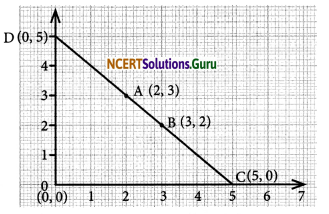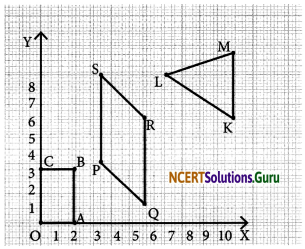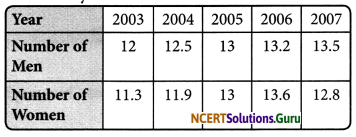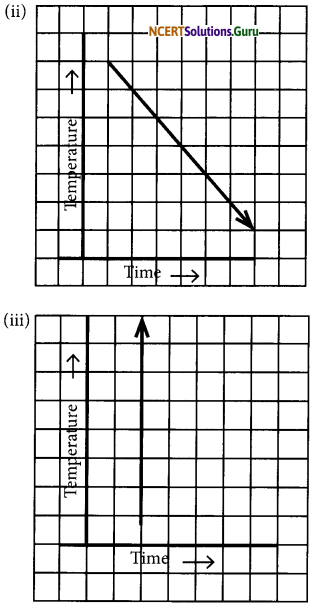NCERT Solutions for Class 8 Hindi Vasant Chapter 17 बाज और साँप
These NCERT Solutions for Class 8 Hindi Vasant Chapter 17 बाज और साँप Questions and Answers are prepared by our highly skilled subject experts.
बाज और साँप NCERT Solutions for Class 8 Hindi Vasant Chapter 17
Class 8 Hindi Chapter 17 बाज और साँप Textbook Questions and Answers
शीर्षक और नायक
प्रश्न 1.
लेखक ने इस कहानी का शीर्षक कहानी के दो पात्रों के आधार पर रखा है। लेखक ने इस कहानी के लिए बाज और साँप को ही क्यों चुना होगा? क्या यही कहानी किन्हीं और पात्रों द्वारा कही जा सकती है ? आपस में चर्चा कीजिए।
उत्तर:
‘बाज और साँप’ एक दूसरे के दुश्मन हैं। इस कहानी में क्रियाशीलता और आलस्य दो भावनाएँ क्रमशः बाज और साँप के माध्यम से प्रकट की गई हैं। बाज संघर्ष और सक्रियता में आनन्द महसूस करता है। साँप आलसी है। उसके लिए अपनी खोखल से बड़ा सुख कहीं नहीं है। इसलिए लेखक ने इन दोनों को शीर्षक के लिए चुना है। यह कहानी स्वच्छन्द विचरण करने वाले शेर और तोते और पालतू बनकर जीवन बिताने वाले बैल के द्वारा भी कही जा सकती है।
कहानी से
प्रश्न 1.
घायल होने के बाद भी बाज ने यह क्यों कहा- “मुझे कोई शिकायत नहीं है।” अपने विचार प्रकट कीजिए।
उत्तर:
बाज अपने जीवन से संतुष्ट था। जब तक शरीर में ताकत रही सारे सुख भोगे। दूर-दूर तक उड़ानें भरीं। आकाश की सीमाहीन ऊँचाइयों को अपने पंखों से नापा। इसीलिए उसने कहा कि मुझे कोई शिकायत नहीं है।
प्रश्न 2.
बाज जीवन भर आकाश में ही उड़ता रहा फिर घायल होने के बाद भी वह उड़ना क्यों चाहता था ?
उत्तर:
बाज को अँधेरी गुफा की सीलन और दुर्गन्ध पसन्द नहीं थी। वह आकाश जैसा खुलापन यहाँ नहीं पा सकता था। वह शरीर को घसीट कर बाहर लाया। आकाश को देखकर उसके मन में आशा जगी। इसीलिए वह घायल होने के बाद भी उड़ना चाहता था।
प्रश्न 3.
साँप उड़ने की इच्छा को मूर्खतापूर्ण मानता था फिर भी उसने उड़ने की कोशिश क्यों की ?
उत्तर:
साँप ने सोचा-आकाश में न जाने क्या खज़ाना रखा है। इस रहस्य का पता लगाना चाहिए। कम से कम उस आकाश का स्वाद तो चखना चाहिए इसीलिए उड़ने की इच्छा को मूर्खतापूर्ण मानने पर भी उसने उड़ने की कोशिश की।
प्रश्न 4.
बाज के लिए लहरों ने गीत क्यों गाया होगा ?
उत्तर:
बाज के लिए लहरों ने इसलिए गीत गाया होगा क्योंकि बाज साहसी, प्राणों की बाजी लगाने वाला बहादुर, निडर होकर शत्रुओं का मुकाबला करने के लिए तत्पर था।
प्रश्न 5.
घायल बाज को देखकर साँप खुश क्यों हुआ होगा ?
उत्तर:
बाज साँप का शत्रु है और उस पर आक्रमण कर सकता है। अब घायल होने के कारण बाज उसे हानि नहीं पहुंचा सकता था; अतः बाज को देखकर साँप मन ही मन खुश हुआ।
![]()
कहानी से आगे
प्रश्न 1.
कहानी में से वे पंक्तियाँ चुनकर लिखिए, जिनसे स्वतंत्रता की प्रेरणा मिलती हो।
उत्तर:
“यदि तुम्हें स्वतंत्रता इतनी प्यारी है तो इस चट्टान के किनारे से ऊपर क्यों नहीं उड़ जाने की कोशिश करते। हो सकता है कि तुम्हारे पैरों में अभी इतनी ताकत बाकी हो कि तुम आकाश में उड़ सको। कोशिश करने में क्या हर्ज है?”
प्रश्न 2.
लहरों का गीत सुनने के बाद साँप ने क्या सोचा होगा? क्या उसने फिर से उड़ने की कोशिश की होगी? अपनी कल्पना से आगे की कहानी पूरी कीजिए।
उत्तर:
लहरों का गीत सुनने के बाद साँप ने सोचा होगा कि बाज ने जो प्रयास किया, वह सही किया। बाज साहसी है। उसने घायल होने पर भी उड़ने की कोशिश की। वह आकाश में उड़ने वाला प्राणी है। उसके लिए आकाश ही सबसे खुबसूरत जगह है। मैं उड़ने वाला प्राणी नहीं हूँ इसलिए मैं जिस हालत में हूँ, मेरे लिए वही ठीक है। बाज की तरह उड़ने में मेरे प्राण जाते-जाते बच गए। मुझे दुबारा कोशिश करके खुद को परेशानी में नहीं डालना चाहिए।
प्रश्न 3.
क्या पक्षियों को उड़ते समय सचमुच आनन्द का अनुभव होता होगा या स्वाभाविक कार्य में आनन्द का अनुभव होता ही नहीं? विचार प्रकट कीजिए।
उत्तर:
हरेक प्राणी को स्वाभाविक कार्य करने में आनन्द महसूस होता है। उड़ना पक्षियों का स्वाभाविक कार्य है। वे जब और जहाँ जाना चाहते हैं, उड़कर तुरन्त जा सकते हैं। उनके लिए कोई बाधा नहीं। उन्हें किसी की आज्ञा का पालन नहीं करना पड़ता। न ही उन पर किसी ने किसी प्रकार का आदेश बलपूर्वक थोपा है; अतः उड़ना पक्षियों के लिए आनन्ददायक है।
प्रश्न 4.
मानव ने भी हमेशा पक्षियों की तरह उड़ने की इच्छा मन में रखी है। मनुष्य की इस इच्छा का परिणाम क्या हुआ? आज मनुष्य उड़ने की इच्छा किन साधनों से पूरी करता है।
उत्तर:
मानव ने भी हमेशा उड़ने की इच्छा अपने मन में रखी है। उसने उड़ने की कोशिश की असफल हुए फिर कोशिशें की। आज वायुयान, हेलीकॉप्टर और अन्तरिक्ष यान मानव की उसी इच्छा शक्ति का परिणाम हैं।
अनुमान और कल्पना
- यदि इस कहानी के पात्र बाज और साँप न होकर कोई और होते तब कहानी कैसी होती? अपनी कल्पना से लिखिए।
- तोता और बैल
बैल को खूटे पर बँधा हुआ देखकर तोता हँसा-“भाई तुम्हारे तो ठाठ हैं। दिन भर हल खींचना पड़ता है। किसान के डण्डे भी खाए। तब जाकर तुम्हें चारा मिला। दिन की चिलचिलाती धूप भी तुम्हें अपनी पीठ पर झेलनी पड़ी।”
बैल चारा खाते-खाते रुका-“तुम्हारी तरह दिन भर चार दानों के लिए मीलों-मील मरमार तो नहीं करनी पड़ती। घर लौटने पर इतना तो तय रहता है कि पेट भरने के लिए पूरा चारा मिल जाएगा। फिर जो चारा खिलाएगा, वह काम तो लेगा ही। बिना काम किये खाना भी तो पाप है। तुम कोई काम नहीं करते। चुपके से किसी के मक्का के खेत में घुस जाते हो। किसी के बाग में चोरी-छिपे जाकर फल कुतरने लगते हो।”
“इस तरह खाने का अपना ही आनन्द है। तरह-तरह के बढ़िया फल खाने को मिल जाते हैं। अच्छे फल ढूँढ़ने के लिए भी तो कर्म करना पड़ता है। हमें जो आज़ादी मिली हुई है, उसका तो मज़ा ही कुछ अलग है। हम अपनी मर्जी के मालिक हैं। तुम अपनी मर्जी से कहीं भी नहीं जा सकते। अपनी मर्जी का खा भी नहीं सकते। तुम्हारे मालिक जो चने की बढ़िया दाल खाते हैं, हम उनके आँगन में जाकर कुछ दाने उसमें से खा लेते हैं। तुम्हारे आँगन में इस आम पर हर साल बढ़िया आम लगते हैं। तुमने कभी चखे भी नहीं होंगे। हमें देखिए-पके हुए आमों का आनन्द हम सबसे पहले उठाते हैं। तुम्हारे मालिक से भी पहले”-तोते ने आँखें मटका कर कहा।
बैल कहाँ चुप रहने वाला था। वह अपने थूथन को हिलाकर बोला-“ठण्ड और बारिश में मुझे अलग कोठरी में बाँध देते हैं। तुम्हें तो ठण्ड, बारिश और ओलों की मार झेलनी पड़ती है।”
“अरे भाई! हम भी किसी मकान के कोने में जाकर दुबक जाते हैं। हमारा भी समय कट जाता है। दिक्कत तो सभी के साथ है। हमें शिकारी मार गिराते हैं। चिड़ीमार पकड़ कर पिंजरे में बंद कर लेते हैं। बाज भी झपट्टा मार कर हमें मार देता है। आज़ादी मिली है तो उसकी कुछ कीमत तो चुकानी पड़ेगी। आनन्द और आज़ादी कोई मुफ़्त में थोड़े ही मिलते हैं?” तोते ने अपनी बात को महत्त्व देते हुए कहा-“खुली हवा में साँस लेने का आनन्द ही कुछ और है।”
“तुम सही कहते हो”-बैल ने सिर हिलाकर कहा-“परन्तु मेरा जीवन केवल मेरे लिए नहीं है। मैं जिस फसल को उगाने में मदद करता हूँ, उससे पूरे परिवार का पालन पोषण होता है। मेरा मालिक मुझे चारा खिलाने के बाद ही खाना खाता है। वह सुबह उठकर मुझे पहले चारा खिलाता है तब खुद कुछ खाता है। मेरा जीवन तुम्हारी तरह आज़ाद भले ही न हो, परन्तु एकदम निरर्थक भी नहीं है।”
तोते को बैल की बात सही लगी। वह बोला- “हम दोनों ही अपनी-अपनी जगह सही हैं। ईश्वर ने हमारा जीवन जैसा बनाया है, हमें वैसा ही जीवन जीना है। अच्छा चलता हूँ” कहकर तोता फुर्र से उड़ गया। बैल बहुत देर तक सिर उठाए आकाश की तरफ देखता रह गया।
![]()
‘हिमांशु’
भाषा की बात
प्रश्न 1.
कहानी में से अपनी पसंद के पाँच मुहावरे चुनकर उनका वाक्यों में प्रयोग कीजिए।
उत्तर:
(क) अंतिम साँसें गिनना-शिकारी की गोली से आहत कबूतर अंतिम साँसें गिन रहा था।
(ख) आखिरी घड़ी आ पहँची-नेमचन्द कई महीने से बीमार थे। अब उनके जीवन की आखिरी घड़ी आ पहँची थी।
(ग) मिट्टी में मिलना-हमें घमण्ड नहीं करना चाहिए। यह शरीर एक दिन मिट्टी में मिल जाएगा।
(घ) आँखों से ओझल होना-नौकर ने मालिक के आँखों से ओझल होते ही हेराफेरी का काम शरू कर दिया।
(ङ) प्राणों की बाजी लगाना-हजारों जवान प्राणों की बाजी लगाकर शत्रु की सेना पर टूट पड़े।
प्रश्न 2.
‘आरामदेह’ शब्द में ‘देह’ प्रत्यय है। ‘देह’ ‘देने वाला’ के अर्थ में प्रयुक्त होता है। देने वाला के अर्थ में ‘द’, ‘प्रद’, ‘दाता’, ‘दाई’ आदि का प्रयोग भी होता है, जैसे-सुखद, सुखदाता, सुखदाई, सुखप्रद ।
उपर्युक्त समानार्थी प्रत्ययों को लेकर दो-दो शब्द बनाइए।
उत्तर:
उत्तर:
प्रत्ययों से बनने वाले शब्द
द – दुखद, जलद, वारिद
प्रद – लाभप्रद, ज्ञानप्रद, आनन्दप्रद
दाता – अन्नदाता, दुखदाता, शरणदाता
दाई – दुखदाई, आनन्ददाई
देह – नुकसानदेह, तकलीफदेह
[‘नुकसान’ के साथ दायक जोड़कर नुकसानदायक नहीं बनता; इसी प्रकार ‘कष्ट’ के साथ देह जोड़कर ‘कष्टदेह’ नहीं बनता।]
वस्तुनिष्ठ प्रश्नोत्तर
प्रश्न 1.
साँप कहाँ रहता था ?
(क) चट्टान पर
(ख) पेड़ पर
(ग) अंधेरी गुफा में
(घ) रेगिस्तान में
उत्तर:
(ग) अंधेरी गुफा में।
प्रश्न 2.
बाज किस हालत में गुफा में आ गिरा ?
(क) खून से लथपथ
(ख) तीर से घायल
(ग) सही हालत में
(घ) उड़ते-उड़ते अचानक
उत्तर:
(क) खून से लथपथ।
प्रश्न 3.
बाज के किस हिस्से में जख्मों के निशान थे ?
(क) सिर पर
(ख) पंजों पर
(ग) छाती पर
(घ) आँखों पर
उत्तर:
(ग) छाती पर।
प्रश्न 4.
ज़मीन पर गिरते ही बाज ने क्या किया ?
(क) कुछ नहीं
(ख) चीख मारी
(ग) मुस्कराया
(घ) बड़बड़ाया
उत्तर:
(ख) चीख मारी।
![]()
प्रश्न 5.
साँप तुरन्त बाज के पास क्यों नहीं पहुँचा ?
(क) वह उससे मिलना नहीं चाहता था
(ख) नफरत करता था
(ग) डरता था
(घ) वह कुछ काम कर रहा था
उत्तर:
(ग) डरता था।
प्रश्न 6.
‘मिट्टी में मिलना’ का अर्थ है-
(क) नष्ट होना
(ख) बीज के रूप में तैयार होना
(ग) गायब होना
(घ) छुप जाना
उत्तर:
(क) नष्ट होना।
प्रश्न 7.
लुढ़कता हुआ बाज कहाँ जा गिरा ?
(क) घाटी में
(ख) समुद्र में
(ग) नदी में
(घ) पेड़ के नीचे
उत्तर:
(ग) नदी में।
प्रश्न 8.
छोटी-छोटी चट्टानों पर धप्प से जा गिरा। कौन ?
(क) बाज
(ख) साँप
(ग) मगरमच्छ
(घ) कोई नहीं
उत्तर:
(ख) साँप।
प्रश्न 9.
चट्टानों के नीचे से साँप ने क्या सुना ?
(क) रोने की आवाज़
(ख) कराहने की आवाज़
(ग) चीखने की आवाज़
(घ) गाने की आवाज़
उत्तर:
(ख) गाने की आवाज़।
![]()
बोध-प्रश्न
निम्नलिखित अवतरणों को पढ़िए एवं पूछे गए प्रश्नों के उत्तर दीजिए
(क) बाज में एक नयी आशा जग उठी। वह दूने उत्साह से अपने घायल शरीर को घसीटता हुआ चट्टान के किनारे तक खींच लाया। खुले आकाश को देखकर उसकी आँखें चमक उठीं। उसने एक गहरी, लंबी साँस ली और अपने पंख फैलाकर हवा में कूद पड़ा।
किंतु उसके टूटे पंखों में इतनी शक्ति नहीं थी कि उसके शरीर का बोझ सँभाल सकें। पत्थर-सा उसका शरीर लुढ़कता हुआ नदी में जा गिरा। एक लहर ने उठकर उसके पंखों पर जमे खून को धो दिया, उसके थके-माँदे शरीर को सफ़ेद फेन से ढक दिया, फिर अपनी गोद में समेटकर उसे अपने साथ सागर की ओर ले चली।
प्रश्न 1.
बाज में एक नयी आशा जागने पर क्या हुआ ?
उत्तर:
नयी आशा जागने पर बाज अपने घायल शरीर को घसीटता हुआ चट्टान के किनारे तक ले लाया।
प्रश्न 2.
खुले आकाश को देखकर बाज पर क्या प्रभाव पड़ा ?
उत्तर:
खुले आकाश को देखकर बाज की आँखों में चमक जाग उठी।
प्रश्न 3.
हवा में कूदने का बाज पर क्या प्रभाव पड़ा ?
उत्तर:
बाज के पंख टूटे हुए थे और उनमें शरीर का बोझ संभालने की ताकत नहीं थी। अतः हवा में कूदने पर उसका पत्थर-सा शरीर लुढ़कता हुआ नदी में जा गिरा।
प्रश्न 4.
लहर ने बाज के साथ क्या व्यवहार किया ?
उत्तर:
एक लहर ने उठकर बाज के पंखों पर जमे खून को धो दिया और उसके थके-माँदे शरीर को सफ़ेद फेन से ढक दिया फिर उसे गोद में समेटकर सागर तक पहुँचा दिया।
![]()
(ख) पक्षी भी कितने मूर्ख हैं! धरती के सुख से अनजान रहकर आकाश की ऊँचाइयों को नापना चाहते थे। किंतु अब मैंने जान लिया कि आकाश में कुछ नहीं रखा। केवल ढेर-सी रोशनी के सिवा वहाँ कुछ भी नहीं, शरीर को सँभालने के लिए कोई स्थान नहीं, कोई सहारा नहीं। फिर वे पक्षी किस बूते पर इतनी डींगें हाँकते हैं, किसलिए धरती के प्राणियों को इतना छोटा समझते हैं। अब मैं कभी धोखा नहीं खाऊँगा, मैंने आकाश देख लिया और खूब देख लिया। बाज तो बड़ी-बड़ी बातें बनाता था, आकाश के गुण गाते थकता नहीं था। उसी की बातों में आकर मैं आकाश में कूदा था। ईश्वर भला करे, मरते-मरते बच गया। अब तो मेरी यह बात और भी पक्की हो गई है कि अपनी खोखल से बड़ा सुख और कहीं नहीं है। धरती पर रेंग लेता हूँ, मेरे लिए यह बहुत कुछ है। मुझे आकाश की स्वच्छंदता से क्या लेना-देना? न वहाँ छत है, न दीवारें हैं, न रेंगने के लिए जमीन है। मेरा तो सिर चकराने लगता है। दिल काँप-काँप जाता है। अपने प्राणों को खतरे में डालना कहाँ की चतुराई है?”
प्रश्न 1.
पक्षी भी कितने मूर्ख हैं! यह बात किसने कही और क्यों ?
उत्तर:
यह बात साँप ने कही। पक्षी धरती के सुख से अनजान है-इसीलिए यह बात कही।
प्रश्न 2.
साँप ने क्या जान लिया था ?
उत्तर:
साँप ने जान लिया था कि आकाश में ढेर सारी रोशनी के सिवा कुछ भी नहीं है। शरीर को सँभालने के लिए न कोई स्थान है और न कोई सहारा।
प्रश्न 3.
साँप किसकी बातों में आकर कूदा था और क्यों ?
उत्तर:
साँप बाज की बातों में आकर कूदा था क्योंकि वह आकाश के गुण गाता था, बड़ी-बड़ी बातें बनाता था।
प्रश्न 4.
साँप के मन में क्या बात पक्की हो गई थी?
उत्तर:
साँप के मन में यह बात पक्की हो गई कि अपनी खोखल से बड़ा सुख कहीं भी नहीं।
प्रश्न 5.
साँप को आकाश की स्वच्छन्दता क्यों पसन्द नहीं थी ?
उत्तर:
साँप को आकाश की स्वच्छन्दता इसलिए पसन्द नहीं थी, क्योंकि वहाँ रेंगने के लिए न छत है, न दीवारें। उसका सिर चकराने लगा था और दिल काँपने लगा था।
प्रश्न 6.
साँप किस बात को उचित नहीं मानता था ?
उत्तर:
साँप अपने जीवन को खतरे में डालना ठीक नहीं समझता।
![]()
(ग) हमारा यह गीत उन साहसी लोगों के लिए है जो अपने प्राणों को हथेली पर रखे हुए घूमते हैं। चतुर वही है जो प्राणों की बाजी लगाकर जिंदगी के हर खतरे का बहादुरी से सामना करे।
ओ निडर बाज! शत्रुओं से लड़ते हुए तुमने अपना कीमती रक्त बहाया है। पर वह समय दूर नहीं है, जब तुम्हारे खून की एक-एक बूंद जिंदगी के अँधेरे में प्रकाश फैलाएगी औरी साहसी, बहादुर दिलों में स्वतंत्रता और प्रकाश के लिए प्रेम पेदा करेगी। तुमने अपना जीवन बलिदान कर दिया किंतु फिर भी तुम अमर हो। जब कभी साहस और वीरता के गीत गाए जाएँगे, तुम्हारा नाम बड़े गर्व और श्रद्धा से लिया जाएगा।
“हमारा गीत जिंदगी के उन दीवनों के लिए है जो मृत्यु से भी नहीं डरते।”
प्रश्न 1.
चतुर प्राणी किसे बताया गया है और क्यों ?
उत्तर:
बाज को चतुर प्राणी बताया गया है क्योंकि उसने प्राणों की बाजी लगाकर ज़िन्दगी के हर खतरे का बहादुरी से सामना किया था।
प्रश्न 2.
बाज को निडर क्यों कहा गया है ?
उत्तर:
बाज ने शत्रुओं से लड़ते हुए अपना कीमती रक्त बहाया था, इसलिए उसे निडर कहा गया था।
प्रश्न 3.
जीवन बलिदान करने पर भी बाज को अमर क्यों कहा गया है ?
उत्तर:
जब कभी साहस और वीरता के गीत गाए जाएँगे उस समय बाज का नाम गर्व और श्रद्धा से लिया जाएगा। इसीलिए बाज को अमर कहा गया है।
प्रश्न 4.
जीवन का गीत किस तरह के दीवानों के लिए है ?
उत्तर:
जीवन का गीत उन दीवानों के लिए है जो मृत्यु से भी नहीं डरते।
![]()
बाज और साँप Summary
पाठ का सार
समद्र के किनारे पर्वत की अँधेरी गफा में एक साँप रहता था। अँधेरी घाटियों में एक नदी भी बहती थी जो शोर मचाती हुई समुद्र में जाकर मिल जाती थी। सॉप अपनी हालत से खुश था। वह अपनी गुफा का स्वामी है, उसे किसी से कुछ लेन-देना नहीं है। एक दिन उड़ता हुआ एक घायल बाज़ गुफा में आ गिरा। वह पीड़ा से चीखा और धरती पर लोटने लगा साँप पहले उससे डरा परन्तु उसकी बेदम हालत को देख कर वह बाज के पास पहुँचा। बाज ने साँप को बताया कि उसने जीवन का आनन्द उठा लिया है। आकाश की ऊँचाइयों को अपने पंखों से नापा है। वह आनन्द तुम्हें नहीं मिलेगा। साँप ने आकाश की तुलना में अपनी गुफा में रहना अच्छा बताया।
साँप का सोचना था-चाहे आकाश में उड़ो, चाहे धरती पर रेंगकर चलो, एक दिन सबको मरना है। बाज ने सीलन भरी गुफा देखी और उड़ने की नाकामी पर दुखी हुआ। उसके दुख को देखकर साँप ने कहा की तुम उड़ने की कोशिश कर सकते हो। बाज गहरी साँस लेकर हवा में कूद पड़ा। पंख कमज़ोर थे। वह सँभल न सका और नदी में गिरकर बह गया। बाज की मृत्यु और आकाश के प्रति उसके प्रेम पर साँप सोचता रहा। साँप ने सोचा-आकाश में ऐसा क्या खज़ाना है। मुझे पता लगाना चाहिए। यह सोचकर साँप ने अपना शरीर सिकोड़ा और खुद को शून्य में छोड़ दिया। वह चट्टान पर जा गिरा लेकिन बच गया।
उसने सोचा आकाश में कुछ नहीं सिवाय ढेर सारी रोशनी के। पक्षी पता नहीं क्यों शेखी बघारते हैं। मैं किसी तरह बच गया। अब धोखा नहीं खाऊँगा। मुझे आकाश से क्या लेना ? बाज़ अभागा था जिसने आकाश की आज़ादी के लिए जान दे दी। तभी साँप ने चट्टानों के नीचे एक मधुर संगीत सुना। लहरें गा रही थीं यह गीत उन लोगों के लिए था जिन्होंने जिन्दगी के हर खतरे का सामना किया। बाज भी उन्हीं में से एक था। वह जान देकर अमर हो गया। “हमारा गीत ज़िन्दगी के उन दीवानों के लिए है जो मर कर भी मृत्यु से नहीं डरते।
शब्दार्थ : मिलाप-मेल; गर्जन-गरजना; तर्जन-डाँटना, धमकाना; अंतिम साँसें गिनना-मरने के निकट होना; आखिरी घड़ी आ पहुँचना-मृत्यु निकट होना; भोगा-आनंद उठाया, आरामदेह-आराम प्रदान करने वाला; मिट्टी में मिलना-मरना; सिटपिटा गया-घबरा गया; वियोग-बिछुड़ना; फेन-झाग; शून्यता-खालीपन; विस्तार-फैलाव; असीमसीमा रहित; आँखों से ओझल होना -गायब होना, दिखाई न देना; आँसू बहाना-दुखी होना; भरपाया-छक गया; प्राणों की बाजी लगाना-मरने के लिए तैयार होना; प्राणों को हथेली पर रखकर घूमना-मरने से बिल्कुल न डरना।









































